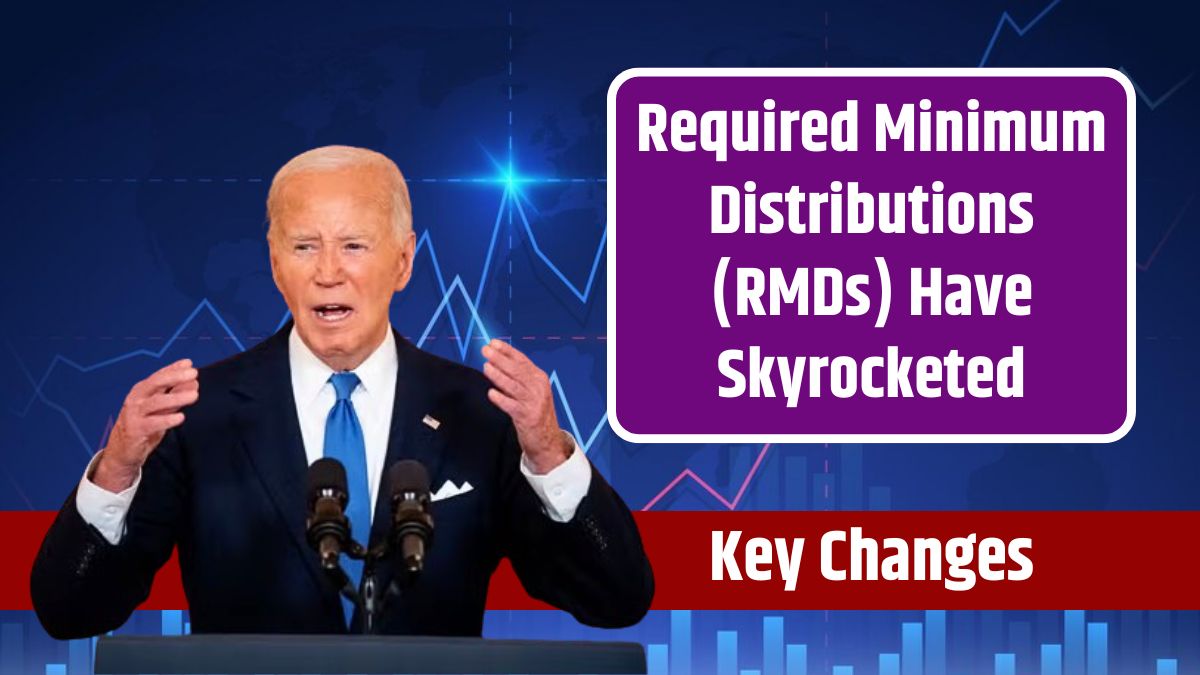Retirees need to be aware of significant changes affecting their required minimum distributions (RMDs) as they have seen considerable increases this year. RMDs are the minimum amounts retirees must withdraw annually from their retirement accounts. If you’ve been diligent in saving for retirement, you’re likely in good shape.
However, with these new rules, it’s essential to stay informed about how your withdrawals might be affected.
Table of Contents
RMDs
In the U.S., retirees must withdraw a minimum amount from certain retirement accounts annually. This applies to various types of retirement accounts, including traditional IRAs, SEP IRAs, SIMPLE IRAs, and 401(k)s.
However, Roth IRAs are an exception as they do not require RMDs during the account holder’s lifetime. These withdrawals start at age 73, up from the previous age of 72, thanks to recent legislative changes.
Roth 401(k) Advantage
Roth 401(k)s have been part of employer-sponsored retirement plans for about two decades. They allow employees to contribute after-tax dollars, providing tax-free income in retirement. Unlike traditional 401(k)s, Roth 401(k)s don’t offer an initial tax deduction but benefit from tax savings after age 59½ and meeting the five-year rule.
Changes to RMDs
The SECURE 2.0 Act has introduced several changes:
- Increased RMD Age: The age for RMDs increased from 72 to 73 in 2023.
- Roth 401(k) Exemption: Roth 401(k)s no longer require RMDs, making them even more appealing.
Rolling Over to Roth IRA
Rolling a Roth 401(k) into a Roth IRA can eliminate RMDs, but remember the five-year rule. The Roth IRA must be open for at least five years before tax-free withdrawals can be made. This conversion allows for more flexible withdrawals without incurring additional taxes, and the account can continue to grow tax-free.
Avoiding RMDs
The SECURE 2.0 Act mandates that beneficiaries of inherited IRAs must take RMDs annually, depleting the account within ten years. However, for IRAs inherited after 2020, there’s a reprieve from annual RMDs until 2024.
This means you can delay taking withdrawals, which might reduce your tax burden by spreading distributions over a more extended period.
Qualified Charitable Distributions
QCDs provide a way to reduce RMDs significantly. Seniors aged 70½ or older can donate up to $105,000 from their IRAs to qualified charities. This amount counts toward the RMD but is not included in taxable income. For married couples, the limit is doubled to $210,000.
Maximizing Tax Savings
Using QCDs is a strategic way to reduce your tax liability. Even if you don’t have the means to donate the full $105,000, any amount can help reduce your RMD and, consequently, your taxable income. Additionally, if you opt for the standard deduction instead of itemizing, QCDs can still be beneficial.
Equitable Distribution
For those who have inherited IRAs, considering an equitable distribution over the ten-year period can help manage and potentially lower the overall tax burden. Spreading out withdrawals can prevent a significant tax hit in any single year.
Staying informed about the latest changes in RMD regulations is crucial for retirees. With the SECURE 2.0 Act bringing new opportunities, such as increased RMD ages and exemptions for Roth 401(k)s, you can better manage your retirement funds.
Consider using strategies like rolling over to a Roth IRA or utilizing QCDs to maximize your retirement savings and minimize your tax liabilities.
FAQs
What is the new age for RMDs in 2023?
The new RMD age is 73.
Do Roth 401(k)s require RMDs?
No, Roth 401(k)s are exempt from RMDs.
Can I roll over my Roth 401(k) to a Roth IRA?
Yes, and it eliminates RMDs.
How much can I donate through a QCD?
You can donate up to $105,000 annually.
What’s the rule for inherited IRAs under SECURE 2.0?
Inherited IRAs must be depleted within ten years.








